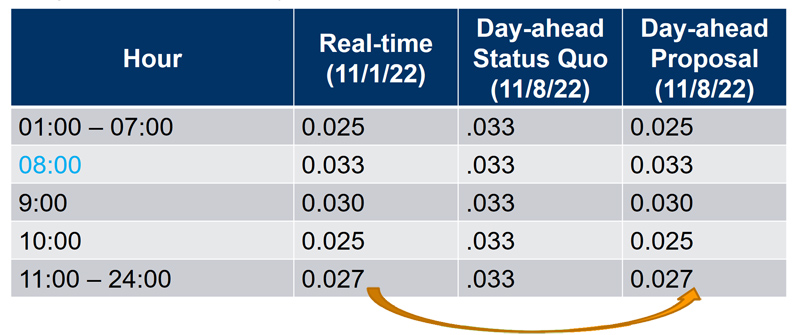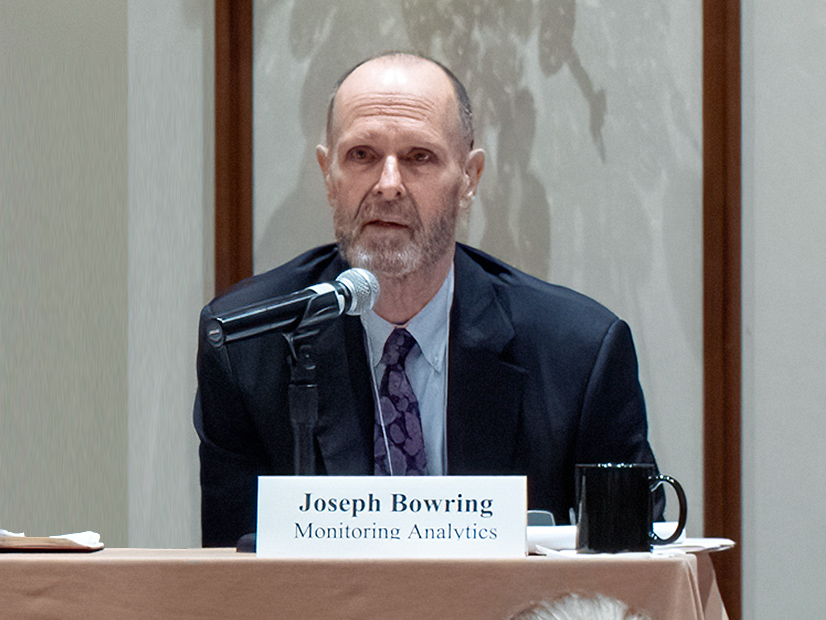VALLEY FORGE, Pa. — The Market Implementation Committee last week overwhelmingly adopted a problem statement and issue charge to explore whether PJM should account for local issues, such as state and local policies, that may impact the development of the net cost of new entry (CONE) in a region.
The measure passed Wednesday with 97% of votes supporting.
While there was general agreement among stakeholders that the issue should be addressed by PJM, there were questions about how far the scope of the issue charge should go.
James Wilson, a consultant to state consumer advocates, likened making changes to the derivation of net CONE to changing the length of one leg of a stool without looking at the others, with the stool in the metaphor being the capacity market and the impact being the tilting of the markets in favor of certain sectors.
“That would cause money to slide off the stool and into their pockets,” he said.
That could be mitigated by implementing the changes to net CONE in the next quadrennial review, when other factors related to the capacity market can also be considered, or by widening the issue charge.
Gary Helm, PJM lead market strategist, said it wasn’t the RTO’s intention to limit discussion and that he did not believe the stakeholder process would yield such results.
Approval to Merge DER and DIRS Subcommittees
Stakeholders approved by acclamation to support merging the Demand Response Subcommittee and the DER & Inverter-Based Resources Subcommittee into a new Distributed Resources Subcommittee (DISRS).
PJM’s Peter Langbein and Scott Baker, the former chairs of the DRS and DIRS, respectively, said the stakeholder composition of the two committees and the materials they reviewed were similar enough that they conduct their work in unison. They said it would be best to work in tandem, particularly when recommending manual changes.
The combined charter will also examine behind-the-meter generation and energy efficiency, in addition to the existing scope of the two committees: DR, distributed energy resources and inverter-based resources.
Independent Market Monitor Joseph Bowring said the committee’s charge would be too broad, which could institutionalize a separate system being created for inverter-based resources. Since the resources falling under the committee are part of the capacity market, he believes they should be addressed by the existing committee structure, which handles other resources.
MIC Endorses Proposal on Hybrid Resources
The committee endorsed a proposal to expand PJM’s hybrid resource rules — which are currently applicable only to solar and storage combinations — to now include all inverter-based resources (IBRs) paired with storage.
 PJM’s proposal to revise its day-ahead zonal load bus distribution factors would draw off data for each hourly node of the most recent corresponding work day, rather than relying only on 8 a.m. from that date. | PJM
PJM’s proposal to revise its day-ahead zonal load bus distribution factors would draw off data for each hourly node of the most recent corresponding work day, rather than relying only on 8 a.m. from that date. | PJMThe proposal allows IBR and storage hybrids to participate in the energy market model created in the first phase of the hybrid resource design, which was implemented for classification and metering on Oct. 1. The energy market model is set to go live on June 1, 2023.
The package also broadens the definition of hybrid resources to include combinations of different types of generation, with or without storage, with the implication of allowing more resource types, such as hydro or gas paired with solar to participate under the provisions from the first phase. (See PJM Releases Phase 2 of Energy Transition Study.)
The language also contains clarifications to PJM’s EcoMax parameters and corresponding uplift rules.
The proposal will require approval by FERC.
First Read on Changes to Day-ahead Zonal Load Bus Distribution Factors
PJM’s Amanda Martin presented a first read of proposed changes to the RTO’s day-ahead factor analysis, which would shift from calculating each hourly node based on state estimator load for that node as of 8:00 AM on that day of the prior week to instead use the previous week’s real-time data from each hour.
For example, instead of basing expectations for 10 a.m. on Nov. 8 on 8 a.m. data from Nov. 1, the corresponding real-time data from 10 a.m. would be pulled.
The lookback period would use the most recently available day of the week where all 24 hours of data are available, meaning if an hour of data was unavailable for Nov. 1 in the previous example, that date would be skipped and data would be pulled from Oct. 25.




